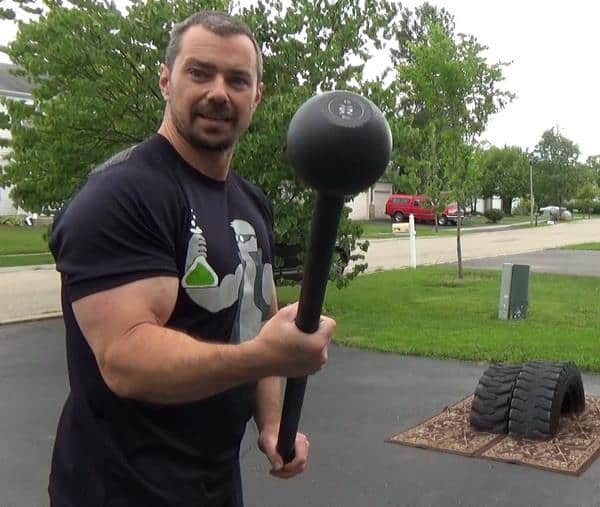I’ll be honest with you…I don’t really like “normal” Interval Training.
To be clear, it’s not that it’s bad…it’s just that I’ve got something better…
…MUCH better.
I call it Cluster Interval Training and it solves a couple of the major problems I’ve always had with “normal” Interval Training.
Problem #1 – Incomplete Recovery Compromises Performance
This happens when you utilize short rest periods (e.g 10-30 seconds) in between hard intervals. You get a great cardio workout, but because you’re always running on incomplete recovery, your actual performance suffers and you don’t develop the speed and athleticism that you SHOULD with training like this.
You’re basically GRINDING your way through most of the workout. It burns a lot of calories but it’s miserable to do from a mental perspective and your training form suffers substantially as you fatigue.
Problem #2 – Complete Recovery Compromises Metabolic Workload
This is the OTHER side of the same coin as #1. If you want to avoid compromising performance, you start taking longer rest intervals (e.g. 2-3 minutes) so you get more complete recovery. This is great in that it allows you to perform at a higher level and get an excellent athletic training effect in terms of more effectively practicing the “skill” of whatever type of activity you’re doing.
In other words, if you’re sprinting, you’ll have better sprint form than you will compared to when you’re using shorter rest periods.
However, the limited number of intervals you can do in a session means you’re also limiting the overall metabolic effect of the interval training.
The Solution to BOTH Problems…Cluster Interval Training
This is an ideal framework for giving you the benefits of BOTH types of interval training…short and long rest periods for metabolic effect AND for better performance.
Here’s how it works…
1. First pick a moderate distance, e.g. 200 meters. I do this kind of training just outside my house, so I use the length of my street as the full distance goal. Using a 400 m track would be very useful for this as well.
2. Pick your interval activity. Yesterday, I did it with loaded runs…in my case, it was running done with a 24 kg (53 lb) kettlebell held in the “racked” position, like this.

You can do it just as regular sprints or as loaded runs like me (or apply the concept to ANY form cardio activity…I’m just partial to carrying heavy things around).
3. You’re going to do short but fast runs of 20 to 50 meters. At the end of the short run, rest 5 to 10 seconds, then repeat. Continue until you hit your total set distance interval (e.g. 200 meters). This gives you the metabolic and cardiovascular benefits of training intervals with incomplete recovery.
For me, the short rest was the time it took to switch hands on the kettlebell rack position (set it down, swing it back up and keep going…and yes, it WAS as brutal as it sounds).
4. Now you’re going to rest 2-3 minutes (or more, if you need it) until you get relatively complete recovery (anything over about 90% is good). This is going to give you the “form” benefits of training intervals with “complete” recovery.
5. When you’re doing loaded running or carries like I was doing, the distance you carry will get shorter and shorter as you go (trust me). However, when doing regular sprints, try to keep the distance fairly standard.
6. Once you’ve rested, do the “short” intervals again. In my case, I just come back down the street towards my house. Then rest for a few minutes again.
Think in Terms of “Sets” and “Reps”
Because essentially, the total distance of 200 meters is one “set.” And you’re dividing up that total distance (200 meters) into smaller blocks of distance…i.e. “reps”…with shorter rest periods.
Here’s a hypothetical example of what it might look like on a chart if you were doing sprints.
Set 1 – 200 m
4 x 50 m
(5 sec rest)
Rest 2 minutes
Set 2 – 200 m
4 x 50 m
(10 sec rest)
Rest 2 1/2 minutes
Set 3 – 200 m
8 x 25 m
(5 sec rest)
Rest 3 minutes
Set 4 – 200 m
10 x 20 m
(10 sec rest)
Done
As I mentioned above, because I was doing LOADED running, my distances got shorter and shorter as I got more and more fatigued over the course of the set.
The first few “reps” had excellent form and I felt strong. As I moved through the distance with incomplete recovery, the reps got harder and harder and I felt like I was running with a bag of cement sitting on my chest (I’m doing a great job selling this, aren’t I 🙂
Bottom line, you can apply this to ANY activity you normally use for interval training…it doesn’t have to be something with weight like my example. It can very easily be done with running, swimming, cycling, skipping rope…you name it.
The important takeaway here is the FRAMEWORK.
Me, I just like to do insane things that freak out my neighbors… ;).

Nick Nilsson is known in the fitness industry as the “Mad Scientist of Muscle,” and for good reason! For more than 28 years, Nick has been creating unique, new exercises and training techniques and putting together some of the most innovative muscle-building and fat-loss programs available anywhere.









Good stuff!
Thanks Will!
Great workout Nick. Thanks for sharing. I will definitely take a look at this one this week on interval day. I’m thinking uphill running, using the rest period to come back down the hill and reset. What do you think?
That’s a great way to do it. I’d say do 3 or 4 intervals with that short rest, then take a longer rest to get closer to full recovery, then go again.
Sounds good to me Nick, or maybe the word is “challenging…” Ahem. Thanks